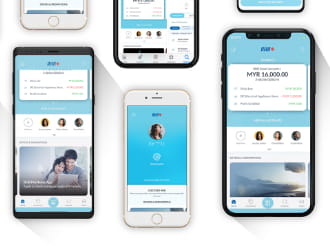A Comprehensive Framework for Managing Risk in an Equity Investment Portfolio
In this article, we explore the crucial role of risk management, evaluate different methods, and introduce newer strategies that could potentially enhance portfolio performance.
If you are new to investing, you might have been told that equities are “too risky.” Don’t be put off – investing in equities is a great way to build wealth over time and should be part of a balanced approach. Like any other asset class, it comes with its share of risks, but there are also ways to manage them that are easy to understand.
Risk management is all about making it worth your time (and money) by minimising losses and maximising returns relative to the level of risk taken. The higher the risk, the higher you should expect your returns to be. That sounds fair, right?
The key to successful investing is managing this risk to achieve a favourable balance between return and potential loss. Effective risk management ensures that your portfolio is resilient.
Traditional vs Modern Risk Management
The traditional risk management approach in equity portfolios revolves around the three key approaches of diversification, asset allocation, and regular portfolio rebalancing.
Diversification involves spreading investments across various financial instruments, industries, and geographical regions to reduce concentration risk. You place your eggs into multiple baskets. Asset allocation is the process of determining the proportional allocation of assets in a portfolio according to the investor's risk tolerance, goals, and investment time frame. How many eggs go into each basket? Finally, rebalancing is the process of realigning the weightings of a portfolio of assets as investments fluctuate over time. You adjust the number of eggs in each basket according to market conditions or a change in your own risk profile.
Zooming into a more detailed picture, the traditional approach utilises currency hedging, investing in dividend stocks, and maintaining a buffer of bonds and/or cash to manage risk.
- Currency hedging is used to reduce the risk from fluctuations in exchange rates. This is important for portfolios with international investments. By using financial instruments such as futures, options, or swaps, investors can lock in exchange rates for future dates, thereby neutralising the potential negative impact of currency movements on the value of overseas investments.
- Dividend stocks represent well-established companies with steady cash flows. These companies provide a regular income through dividends to cushion the impact of market downturns, making them a good way to mitigate market volatility. The dividends can also be reinvested into more shares, compounding the returns over time.
- Bonds act as a safe “base” for portfolios through regular interest payments and the repayment of the principal amount at the end of the term. Government bonds, in particular, are viewed as low risk. Cash or cash equivalents (like money market funds) provide liquidity and safety. A mix of these assets can help smooth out portfolio returns during turbulent times and preserve capital during downturns.
As markets and instruments have evolved and become more sophisticated, newer strategies have emerged that build on the traditional way. We’ve picked out a couple of them here:
Portfolio with Equity Option Premium
This refers to an investment strategy where a portfolio of equities is combined with options strategies to generate additional income and manage risk. The RHB Global Equity Premium Income Fund is a global equity portfolio with exposure to equities and an option overlay to capture both dividend and income from the option premium. The fund feeds into JPMorgan’s Global Equity Premium Income fund.
Returns from this fund are derived from three sources:
- Dividend payout from the underlying equity
- Collecting the equity option premium from the option overlay
- Capital gains (or losses) from the underlying equity, which is diversified within the global equities market
Below is an illustration of how the fund aims to derive its return:

Source: J.P. Morgan, RHBAM, March 2024 For illustration purposes only. The manager seeks to achieve the stated objectives. There can be no guarantee the objectives will be met.
1 This is not a guaranteed annual payout. The Fund Manager may in the future review the distribution policy depending on prevailing market conditions.
Returns from the equity option premium are not guaranteed and can vary over time. Investor must take a long-term position as the benefits of the premium may not be evident in a shorter period. That said, the downsides are very general, and this approach is still worth considering.
However, it is important to note, that a consistent income from equity option premiums might lead the portfolio to miss out on some of the market’s upside potential. On the other hand, the steady monthly income mitigates market volatility and cuts down risk.
This is an ideal approach for investors who wish to stay invested in global equities, but also want a buffer in the form of dividends and the equity option premium for long-term stability.
This fund feeds into an ETF (Exchange Traded Fund) which is more cost effective. The ETF is actively managed, utilising a bottom-up stock-picking approach to enhance the overall returns, as seen below.
Comparison between Equity (Equity Premium Income) Portfolio against Low Volatility Reference Index

Source: JPMorgan, March 2024.
Long/short Market Neutral
This approach is an investment strategy that aims to profit from both rising and falling prices in one or more markets while maintaining a balanced or "neutral," exposure to the overall market. This strategy involves taking long positions in securities expected to increase in value and short positions in securities expected to decrease in value. The goal is to hedge out market risk so that the portfolio's performance is primarily driven by the stock selection instead of broad market movements.
MAMG Systematic Asia Pacific Equity Absolute Return Fund offers an alternative way for investors to invest in the Asia Pacific equity market. It leverages on the capabilities and experience of BlackRock by feeding into the target fund, BSF BlackRock Systematic Asia Pacific Equity Absolute Return Fund.
The investor benefits in three ways:
- Aiming for neutral: By maintaining a balance between long and short positions, the strategy reduces risk by achieving a market-neutral position and focusing on relative performance.
- Capitalising on market inefficiencies: The strategy benefits from stock mispricing regardless of market conditions. Mispriced stocks are identified through quantitative and qualitative analysis.
- Reducing risk: Since both the buying and selling of mispriced stocks are involved, the investor is outside the playing field. As a result, risk is potentially reduced to generate returns that are less correlated with market movements.
The fund aims to achieve positive returns in any market conditions and offer more long-term consistency.

Source: BlackRock as of July 2024
As the strategy is independent of market movements, it can be deployed in volatile market conditions or economic downturns when investors seek more consistent returns. As it does not stick to a traditional 60/40 portfolio structure, it is more agile and better suited to today’s fast-paced market conditions. While volatility often challenge traditional asset classes, it works in favour of the long/short market-neutral approach. The greater the disruption, the more opportunities there are to take advantage of.
However, the approach requires detailed research and expertise in analysing and executing trades, and a regulatory environment that allows short positions.
The chart below shows how the target fund has consistently outperformed the Asia Pacific ex-Japan benchmark over the past three years:

Source: Lipper IM as of 31 December 2023
Risk management is a dynamic and integral part of investing in equities. Whether you prefer the traditional methods or the newer strategies, staying informed is key to improving your odds in the market. Your Relationship Manager can determine which strategy best suits your goals and risk profile. Happy investing!
Disclaimer:
This article is strictly private, confidential and personal to its recipients and should not be copied, distributed or reproduced in whole or in part, nor passed to any third party, without obtaining prior permission of RHB Bank Sdn Bhd (“RHB”).
This article has been prepared by RHB and is solely for your information. It may not be copied, published, circulated, reproduced or distributed in whole or part to any person without the prior written consent of RHB. In preparing this presentation, RHB has relied upon and assumed the accuracy and completeness of all information available from public sources or which was otherwise reviewed by RHB. Accordingly, whilst we have taken all reasonable care to ensure that the information contained in this presentation is not untrue or misleading at the time of publication, we cannot guarantee its accuracy or completeness and make no representation or warranty (whether expressed or implied) and accept no responsibility or liability for its accuracy or completeness. You should not act on the information contained in this article without first independently verifying its contents.
Any opinion, management forecast or estimate contained in this article is based on information available as the date of this article and are subject to change without notice. It does not constitute an offer or solicitation to deal in units of any RHB fund and does not have regard to the specific investment objectives, financial situation or the particular needs of any specific person who may receive this. Investors may wish to seek advice from a financial adviser/unit trust consultant before purchasing units of any funds. In the event that the investor chooses not to seek advice from a financial adviser/unit trust consultant, he should consider whether the fund in question is suitable for him. Past performance of the fund or the manager, and any economic and market trends or forecast, are not necessarily indicative of the future or likely performance of the fund or the manager. The value of units in the fund, and the income accruing to the units, if any, from the fund, may fall as well as rise.
A Product Highlights Sheet (“PHS”) highlighting the key features and risks of the RHB Global Equity Premium Income Fund dated 18 April 2024 and MAMG Systematic Asia Pacific Equity Absolute Return Fund dated 8 January 2024 (“Fund”) are available and investors have the right to request for a PHS.
The Manager wishes to highlight the specific risks of the RHB Global Equity Premium Income Fund are Fund Management Risk, Liquidity Risk, Currency Risk, Country Risk, Interest Rate Risk, Suspension of Redemption Risk, and Distribution out of Capital Risk. The specific risks of MAMG Systematic Asia Pacific Equity Absolute Return Fund are Concentration Risk, Default Risk, Counterparty Risk, Country Risk, Currency Risk, Derivatives Risk, Investment Manager Risk, with other general risks are elaborated in the Information Memorandum.
This article has not been reviewed by the Securities Commission Malaysia (SC).
RHB Bank Berhad 196501000373 (6171-M)














